Importance of Maximizing Upper Extremity Functions With SMA Patients
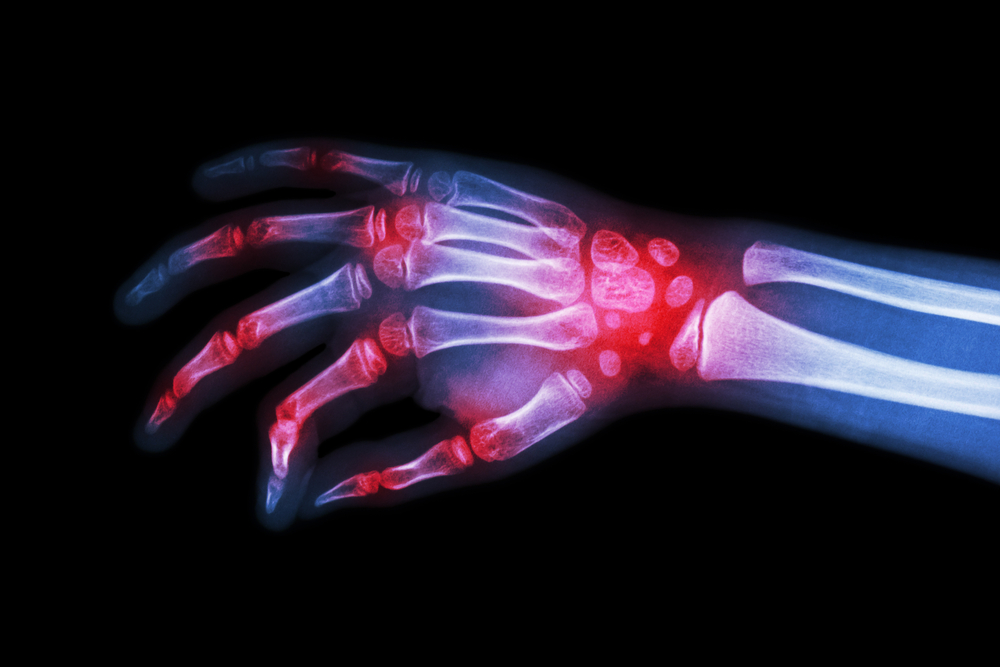
Every patient with SMA has different abilities and deficits as well as different ways of transportation. Most are unable to walk independently, therefore require assistance of some sort. Michael, our patient with SMA, has a power chair that he uses to navigate around. He has his controls on the right side of his chair secondary to having motion and strength in the right upper extremity as compared to little to none on the left side. His left upper extremity has little to no ability to contract muscle in his shoulder, forearm, or hand, therefore requires assistance to move his left arm around. He is able to move his right upper extremity on and off of his control with minor assistance required for hand placement.
Since Michael only has the ability to contract muscles in the right upper extremity, it is important to make sure he has the maximum motion available in that upper extremity to maximize his abilities. He needs to be able to reach and control his controller on his chair as well as many other things that require reaching and grasping items.
When we first assessed his finger range of motion, he was lacking 15° in the 3rd dip and lacking 15° in the 3rd pip, 40° in the 4th dip and lacking 10° in the 4th pip decreasing his ability to have the full use of his right hand in reaching and grasping objects. His right elbow was lacking 51°. With decreased range of motion in his elbow, it decreases the length he is able to reach for items. He was lacking 27° supination of his right upper extremity. Supination is required to turn his palm up to reach for objects and/or grasp items.
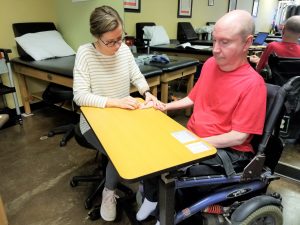
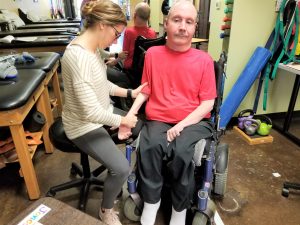
We have now reached full passive range of motion in all digits of his right upper extremity, but he is still lacking active range of motion. We have now decided that he will benefit from wearing a night splint on his hand to continue to improve his active range of motion by keeping him in a static stretch for a long period of time during the night.
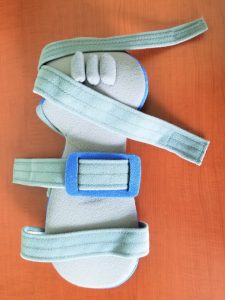
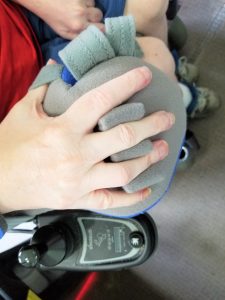
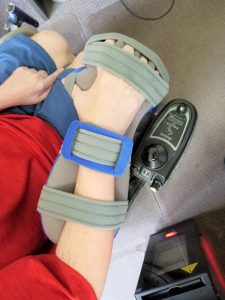
With maximizing his range of motion of his right upper extremity, he will be able to reach and use his right upper extremity with more ability and motion. This will help to increase his independence with using his power chair with more ease as well as reaching for items.
======================== Patient Perspective ========================
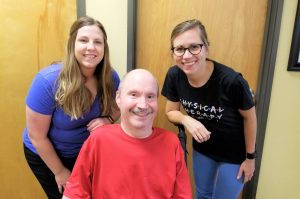
As I age, getting progressively weaker is just part of SMA. Even though I’m on active treatment with Spinraza, I still find myself getting weaker over time, but the progression of the weakness has definitely slowed while being on this treatment. Slowly, over the course of a couple of years, extending my arms and fingers to what would be considered a normal range of motion has become somewhat challenging. My middle and ring fingers on my right hand have started to bend toward the palm of my hand, and extending these fingers out straight has become more challenging. Working with my physical therapist Emily, we’re concentrating on not only extending these fingers, we’re also working on extending the range of motion in my elbow on my right arm so that I can extend my arm further.
While I’ve never been self-conscious as to the way that I look, not being able to extend my arm or fingers on my right hand, has made it more challenging to do what used to be considered normal, like extending my arm to shake someone’s hand when I meet them. If I’m unable to extend my fingers out straight, it makes it difficult for me to give a firm handshake. While no one has ever said anything to me if I accidentally shake their hand with a few of my fingers being curled up, it’s still something that crosses my mind and makes me more aware of my disease. I’ve even found myself trying to avoid shaking hands, thus, not putting myself in these awkward positions. I’ve never been one to back down from a challenge, so the exercises that Emily and I are doing, are helping me to possibly eliminate any further damage, and possibly, correct some of the damage that has already occurred.
Living with SMA presents different challenges for each individual who suffers from this disease, and while some of these challenges may seem either trivial in nature, or even somewhat vain, it’s still an issue that can be addressed and possibly corrected. SMA may redirect parts of my daily life, but if I have anything to say about it, it will never control who I am. Physical therapy is one of the most important aspects of my life, especially now, so if you’re a physical therapist reading this article, please understand the importance of what you do. You may think that you’re doing your job, but in reality, your vastly improving how those of us with SMA live our lives.



